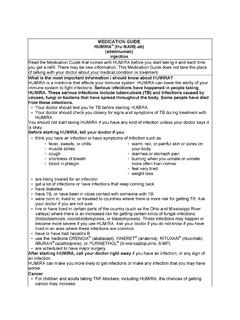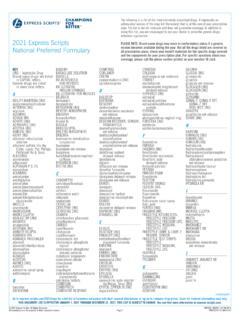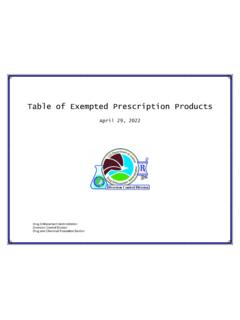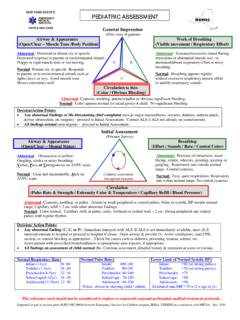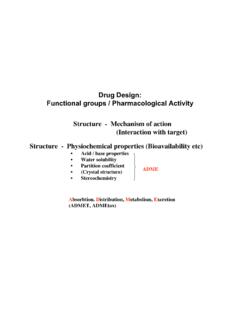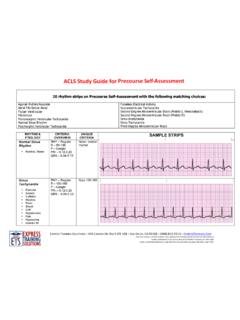Transcription of ADVERSE REACTIONS--------------------------
1 1 HIGHLIGHTS OF PRESCRIBING INFORMATION These highlights do not include all the information needed to use VUITY safely and effectively. See full prescribing information for VUITY. VUITYTM (pilocarpine hydrochloride ophthalmic solution) , for topical ophthalmic use Initial Approval: 1974 -----------------------------INDICATIONS AND USAGE-------------------------- VUITY is a cholinergic muscarinic receptor agonist indicated for the treatment of presbyopia in adults. (1)------------------------DOSAGE AND ADMINISTRATION---------------------- Instill one drop of VUITY in each eye once daily. (2)---------------------DOSAGE FORMS AND STRENGTHS---------------------- Ophthalmic solution containing pilocarpine hydrochloride (3)-------------------------------CONTRA INDICATIONS----------------------------- -Hypersensitivity (4) ------------------------WARNINGS AND PRECAUTIONS----------------------- Poor Illumination: Exercise caution in night driving and other hazardous occupations in poor illumination.
2 ( ) Risk of Retinal Detachment: Rare cases of retinal detachment have been reported with other miotics; patients should be advised to seek immediate medical care with sudden onset of vision loss. ( ) Iritis: Caution is advised in patients with iritis. ( ) ------------------------------- ADVERSE REACTIONS------------------------------ Most common ADVERSE reactions (>5%) are headache and conjunctival hyperemia. ( ) To report SUSPECTED ADVERSE REACTIONS, contact Allergan at 1-800-678-1605 or FDA at 1-800-FDA-1088 or See 17 for PATIENT COUNSELING INFORMATION Revised: 10/2021 FULL PRESCRIBING INFORMATION: CONTENTS* 1 INDICATIONS AND USAGE2 DOSAGE AND ADMINISTRATION3 DOSAGE FORMS AND STRENGTHS4 CONTRAINDICATIONS5 WARNINGS AND Poor Risk of Retinal Use with Contact Potential for Eye Injury or Contamination6 ADVERSE Clinical Trials Experience8 USE IN SPECIFIC Pediatric Geriatric Use 10 OVERDOSAGE11 DESCRIPTION12 CLINICAL Mechanism of Pharmacokinetics13 NONCLINICAL Carcinogenesis, Mutagenesis, Impairment of Fertility14 CLINICAL STUDIES16 HOW SUPPLIED/STORAGE AND HANDLING17 PATIENT COUNSELING INFORMATION* Sections or subsections omitted from the full prescribing information are not.
3 FULL PRESCRIBING INFORMATION 1 INDICATIONS AND USAGE VUITY is indicated for the treatment of presbyopia in adults. 2 DOSAGE AND ADMINISTRATION The recommended dosage of VUITY is one drop in each eye once daily. If more than one topical ophthalmic product is being used, the products should be administered at least 5 minutes apart. 3 DOSAGE FORMS AND STRENGTHS VUITY (pilocarpine hydrochloride ophthalmic solution) is provided as a solution ( mg/mL). 4 CONTRAINDICATIONS VUITY is contraindicated in patients with known hypersensitivity to the active ingredient or to any of the WARNINGS AND PRECAUTIONS Poor Illumination Patients should be advised to exercise caution in night driving and other hazardous occupations in poor illumination.
4 In addition, miotics may cause accommodative spasm. Patients should be advised not to drive or use machinery if vision is not clear. Risk of Retinal Detachment Rare cases of retinal detachment have been reported with other miotics when used in susceptible individuals and those with pre-existing retinal disease. Patients should be advised to seek immediate medical care with sudden onset of vision loss. Iritis VUITY is not recommended to be used when iritis is present because adhesions (synechiae) may form between the iris and the lens. Use with Contact Lenses Contact lens wearers should be advised to remove their lenses prior to the instillation of VUITY and to wait 10 minutes after dosing before reinserting their contact lenses.
5 Potential for Eye Injury or Contamination To prevent eye injury or contamination, care should be taken to avoid touching the dispensing bottle to the eye or to any other surface. 6 ADVERSE REACTIONS The following clinically significant ADVERSE reactions are described elsewhere in labeling: Hypersensitivity [see Contraindications (4)] Clinical Trials Experience Because clinical trials are conducted under widely varying conditions, ADVERSE reaction rates observed in the clinical trials of a drug cannot be directly compared to rates in the clinical trials of another drug and may not reflect the rates observed in practice. 3 VUITY was evaluated in 375 patients with presbyopia in two randomized, double-masked, vehicle-controlled studies (GEMINI 1 and GEMINI 2) of 30 days duration.
6 The most common ADVERSE reactions reported in >5% of patients were headache and conjunctival hyperemia. Ocular ADVERSE reactions reported in 1-5% of patients were blurred vision, eye pain, visual impairment, eye irritation, and increased lacrimation. 8 USE IN SPECIFIC POPULATIONS Pregnancy Risk Summary There are noadequate and well-controlled studies of VUITY administration in pregnant women to inform a drug-associated risk. Oral administration of pilocarpine to pregnant rats throughout organogenesis and lactation did not produce ADVERSE effects at clinically relevant doses. Data Human Data No adequate and well-controlled trials of VUITY have been conducted in pregnant women.
7 In a retrospective case series of 15 women with glaucoma, 4 patients used ophthalmic pilocarpine either pre-pregnancy, during pregnancy or postpartum. There were no ADVERSE effects observed in patients or in their infants. Animal Data In embryofetal development studies, oral administration of pilocarpine to pregnant rats throughout organogenesis produced maternal toxicity, skeletal anomalies and reduction in fetal body weight at 90 mg/kg/day (approximately 970-fold higher than the maximum recommended human ophthalmic dose [MRHOD] of mg/kg/day, on a mg/m2basis). In a peri-/postnatal study in rats, oral administration of pilocarpine during late gestation through lactation increased stillbirths at a dose of 36 mg/kg/day (approximately 390-fold higher than the MRHOD).
8 Decreased neonatal survival and reduced mean body weight of pups were observed at 18 mg/kg/day (approximately 200 times the recommended human daily dose of VUITY). Lactation Risk Summary There is no information regarding the presence of pilocarpine in human milk, the effects on the breastfed infants, or the effects on milk production to inform risk of VUITY to an infant during lactation. Pilocarpine and/or its metabolites are excreted in the milk of lactating rats. Systemic levels of pilocarpine following topical ocular administration are low [see Clinical Pharmacology ( )], and it is not known whether measurable levels of pilocarpine would be present in maternal milk following topical ocular administration.
9 The developmental and health benefits of breastfeeding should be considered along with the mother s clinical need for VUITY and any potential ADVERSE effects on the breastfed child from VUITY. Data Animal Data Following a single oral administration of 14C-pilocarpine to lactating rats, the radioactivity concentrations in milk were similar to those in Pediatric Use Presbyopia does not occur in the pediatric population. 4 Geriatric Use Clinical studies of VUITY did not include subjects aged 65 and over to determine whether they respond differently from younger subjects. Other reported clinical experience with ophthalmic pilocarpine solutions have not identified overall differences in safety between elderly and younger patients.
10 10 OVERDOSAGE Systemic toxicity following topical ocular administration of pilocarpine is rare, but occasionally patients who are sensitive may develop sweating and gastrointestinal overactivity. Accidental ingestion can produce sweating, salivation, nausea, tremors and slowing of the pulse and a decrease in blood pressure. In moderate overdosage, spontaneous recovery is to be expected and is aided by intravenous fluids to compensate for dehydration. For patients demonstrating severe poisoning, atropine, the pharmacologic antagonist to pilocarpine, should be used. 11 DESCRIPTION VUITY (pilocarpine hydrochloride ophthalmic solution) is a cholinergic muscarinic receptor agonist prepared as an isotonic, colorless, sterile ophthalmic solution containing of pilocarpine hydrochloride.




